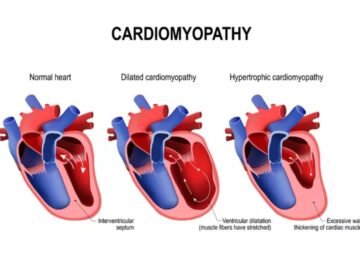
Identifying people at risk for heart disease involves assessing various risk factors and understanding their medical history and lifestyle choices. Here’s a step-by-step guide to help you identify individuals who may be at an elevated risk for heart disease:
Medical History Assessment:
a. Gather information about the individual’s personal and family medical history, including any history of heart disease, high blood pressure, diabetes, or high cholesterol.
b. Determine if they have a history of heart disease risk factors, such as smoking, obesity, or sedentary lifestyle.
Physical Examination:
a. Check for signs of obesity, especially around the abdominal area.
b. Measure blood pressure and assess for hypertension (high blood pressure).
c. Evaluate their overall fitness and activity level.
Lifestyle Factors:
a. Inquire about their diet and eating habits. A diet high in saturated fats, trans fats, and sodium can increase heart disease risk.
b. Ask about their physical activity level. Inactivity is a risk factor.
c. Assess if they smoke or have a history of smoking, as it’s a significant risk factor for heart disease.c. Assess if they smoke or have a history of smoking, as it’s a significant risk factor for heart disease.
d. Inquire about alcohol consumption, as excessive alcohol intake can contribute to heart problems.
Blood Tests:
a. Check cholesterol levels: Elevated levels of LDL (“bad”) cholesterol and low levels of HDL (“good”) cholesterol are risk factors for heart disease.
b. Monitor blood sugar levels: High blood sugar (diabetes or prediabetes) is a risk factor.
Assess Age and Gender:
a. Men over 45 and women over 55 are at increased risk of heart disease, although it can affect people of any age.
b. Recognize that risk factors can vary between genders.
Assess Other Health Conditions:
a. Conditions like hypertension, diabetes, and chronic kidney disease can increase the risk of heart disease.
b. Chronic inflammatory conditions like rheumatoid arthritis and lupus can also raise the risk.
Calculate Risk Scores:
a. Some healthcare providers use risk assessment tools like the Framingham Risk Score or the ASCVD (Atherosclerotic Cardiovascular Disease) risk calculator to estimate an individual’s 10-year risk of heart disease.
Discuss Symptoms:
a. Inquire about any symptoms of heart disease, such as chest pain, shortness of breath, fatigue, or irregular heartbeat.
Consider Special Populations:
a. Some populations, like those with a family history of early heart disease or certain ethnic groups, may have unique risk factors.
Regular Follow-up and Monitoring:
a. Encourage individuals to have regular check-ups with their healthcare provider for ongoing monitoring and risk assessment.
It’s important to note that not all risk factors are equally significant, and their impact can vary from person to person. The best approach is a comprehensive assessment by a healthcare professional, who can provide personalized guidance and recommend interventions to reduce the risk of heart disease. Lifestyle changes, medication, and other interventions may be necessary based on individual risk factors






